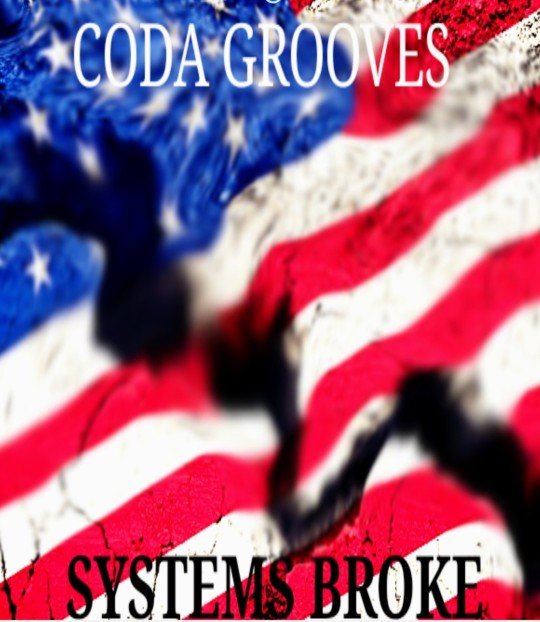#FreeAmerica
Explore tagged Tumblr posts
Text
In honour of my new tumblr name, here is the post that inspired it, an edit I made a few days ago that has been stuck in my head.
#dark academia#dead poet society#dead poets fandom#steven meeks#freeamerica#stephen meeks#gerard pitts#Dps#Dps boys#dps fandom#dark acadamia aesthetic#light academia#edit#movie#robin williams
62 notes
·
View notes
Text
When ever I hear this little gremlins voice…I question whether his balls have dropped… I digress… This little Fucktard has built the most corrupt DOJ, created Lawfare, Perjured himself before Congress and has empowered corrupt lawyers and judges to persecute Trump! Should we bring up the Hunter Laptop or the Russian Collusion Hoax?? Election interference you treasonous traitor! Go Fuck Yourself Garland! FKH

#MerrickGarland#DOJCorruption#Lawfare#PoliticalPersecution#Trump#HunterBiden#ElectionInterference#RussianCollusionHoax#Treason#CorruptPoliticians#PoliticalCommentary#FreeSpeech#ConstitutionalRights#JusticeForTrump#InvestigateHunter#DeepState#PoliticalBias#CorruptionInGovernment#StopThePersecution#FakeNews#MediaBias#DrainTheSwamp#Accountability#ImpeachBiden#FightingBack#AmericanPatriotism#LawAndOrder#CivilRights#FreeAmerica#Trump2024
2 notes
·
View notes
Text
Labels Should Not Be Used As They are
I Am Not a Label
I am A Person
These are my thoughts on Such division
They Know exactly How DIVIDED THEY MAKE US
WILL WE CONTINUE TO LET THEM?? OR WILL WE STAND UNITED NOT DIVIDED
https://x.com/TriciaCordova1/status/1820130572850942136?t=HE1dGIH3yYSaXSIDFxeueA&s=1
##freedom
https://x.com/RobertKennedyJr/status/1819921386225512740?t=axQUxgVu7L65Zb46W22Nww&s=19
#labels
Because WE'VE been TAUGHT TO
EVEN AS THEY PREACH INCLUSION
THEY PURPOSELY CREATE SECLUSION AND SEGREGATION
With It's People
With WE THE PEOPLE
WE ARE ONE
WE CAN NOT DIVIDE
TO REVIVE
TO SURVIVE
TO THRIVE
TO BE ALIVE
WE NEED TO BE ONE
Take Down Government Created Labels
Do Away With The Party System
It only Creates Division
Instant Division
As Do ALL LABELS THEY GIVE US
When We Look At A PERSON
How MANY Labels Do You See
We should NOT
YET We Do
WE'VE been TAUGHT
EVEN AS THEY PREACH INCLUSION
THEy Seclude🧵🪄
0 notes
Photo
Dont do that

“Jesus is Love” Happy Resurrection Sunday! / Happy Easter! Joyeuses Pâques ! Bònn Fèt Pak! ¡Felices Pascuas ! Enjoy a blessed and Safe celebration. Peace be with you.
#ResurrectionSunday #GodBlessYou #prayharder #unity #love #FreeHaiti #FreeAmerica #FreeEarth #Iamgabrisan
https://www.instagram.com/p/CNQZ3eTj2nPLIsBeTSpT6veR8DcqL4FEVqoFuY0/?igshid=1kbp1gdcx9gry
4 notes
·
View notes
Text
joeflaniganofficial
2dSOS- “we’re alive” please send around the world
#AmericanHostage#USASOS#HelpAmerica#HostageNation#SOSUSA#TrappedInAmerica#PleaseSendHelp#AmericanApologyTour#CaptiveCitizens#FreeAmerica#EmbarrassedAmerican#PresidentProblems#DiplomaticDisaster#DearWorld#GlobalSOS#AmericansNeedHelp#WorldPleaseNotice#CrisisDiplomacy#Politics#AmericanCrisis#InternationalRelations#Geopolitics#CurrentEvents#WorldNews#GlobalCommunity
9 notes
·
View notes
Text

#FreeAmerica #NoKings #Trump #Musk #AntiTrump #Protests #JulyFourth
#SystemsBrokeToo #CodaGrooves #Song #Release #SystemsBroke #ProtestSong https://youtu.be/fTZvWHNEK4Y?si=tmLnhbkGz1w6_y_5 Available wherever you download #Music 🎵 🎶 (Both Versions)
https://music.apple.com/us/song/systems-broke-too/1823483792
0 notes
Photo

Face masks are for pussies. Let Johnny O’show you how it’s done. Live and ride free. The invisible enemy is fear. _____________________________________#fucoronaviris #freeamerica #twostrokejunkie #80smoto #80smotocross #johnnyomara #daytonasupercross #hondamotorcycles #oshow #ripitandstickit #brap #motocross #moto #mx #motox #supercross #supercrosslive #dirtbike #dirtbikelife #motocrosslove #motocrosshistory #socialdisruption #motocrosslife #mxlife #brapp #ridefree https://www.instagram.com/p/CAK2khxAWGK/?igshid=1bt0pso5fo0f2
#fucoronaviris#freeamerica#twostrokejunkie#80smoto#80smotocross#johnnyomara#daytonasupercross#hondamotorcycles#oshow#ripitandstickit#brap#motocross#moto#mx#motox#supercross#supercrosslive#dirtbike#dirtbikelife#motocrosslove#motocrosshistory#socialdisruption#motocrosslife#mxlife#brapp#ridefree
2 notes
·
View notes
Text
John Legend, who just staged concerts in India, is immune to the vagaries of chart success
India has witnessed performances by several Grammy winners but singer-songwriter John Legend is the first EGOT to have played our shores. An EGOT, as you may or may not know, is a term that refers to the small list of individuals who have won Emmy, Grammy, Oscar and Tony awards. ALSO READ John Legend supports women’s empowerment campaign Legend, 44, staged two concerts, in Mumbai and New Delhi,…
View On WordPress
#chrissy teigen#Dr. Martin Luther King#egot#FREEAMERICA#Glory#john legend#jr.#LOVEDº1#Mumbai#New Delhi#r&b#raja kumari#the voice#Walkers & Co.
0 notes
Video
youtube
John Legend - Preach (Official Video)
He just did that.
#preach#john legend#he did the damn thing#how is this not trending#music#practice what you preach#FREEAMERICA#pass it along#chrissy teigen
1 note
·
View note
Photo

#impeachthesupremecourtfive #treasoniscausetoanullhispicks #scotus #freeamerica from a #minoritybigots trying to destroy democracy https://www.instagram.com/p/CfVnzA9OoiO/?igshid=NGJjMDIxMWI=
0 notes
Photo

#lego #washingtondc #capitolinvasion #freeamerica #usa #aliens #ufo #nwo #newworldorder #metoo #feminist #blm #maga #revolution #civilwar #partycrashers #buffalosoldier (at Los Angeles, California) https://www.instagram.com/p/CJw9gk6AvHU/?igshid=1ut7pqc7nlx1s
#lego#washingtondc#capitolinvasion#freeamerica#usa#aliens#ufo#nwo#newworldorder#metoo#feminist#blm#maga#revolution#civilwar#partycrashers#buffalosoldier
0 notes
Photo

What better name for the Pokemon inspired by that one action movie guy who apparently likes China's oppression of Hong Kong? What, does he also like the Trump administration's oppression, too? #PokemonGo #Pokemon #Hitmonchan #FreeHongKong #FreeAmerica https://www.instagram.com/p/CGyUMSHhjLR/?igshid=ideqmev9of7h
0 notes
Photo

Driving hyw 193 to Icehouse Rd. Past Georgetown and some bears. Found rubicon trail and total want to go. Found out there are tours. 🙏 Forrest Hill Bridge is always nice. Beautiful El Dorado County. . . . ..... . . . . . . . #adventure #california #drive #adventurethatislife #adventureculture #californiaadventure #rubicontrail #californiadreaming #californiagirl #californialiving #california_igers #californiadreamin #californiagirls #californiaphotographer #sundaydrive #eldoradocounty #hashtagr #freeamerica #nomaskneeded tags by @hashtagr #healthylivesmatter #subaruforestersport #stumpymeadows #eldoradocountyphotographer #sundaydrivesarethebest #eldoradocountyca #freeamericanow #nomaskneededhere #loonlake #highway193 (at California) https://www.instagram.com/p/CGUyFyQDERy/?igshid=i4dn2pnewlq7
#adventure#california#drive#adventurethatislife#adventureculture#californiaadventure#rubicontrail#californiadreaming#californiagirl#californialiving#california_igers#californiadreamin#californiagirls#californiaphotographer#sundaydrive#eldoradocounty#hashtagr#freeamerica#nomaskneeded#healthylivesmatter#subaruforestersport#stumpymeadows#eldoradocountyphotographer#sundaydrivesarethebest#eldoradocountyca#freeamericanow#nomaskneededhere#loonlake#highway193
0 notes
Photo

✨Sisters✨Today We Celebrate The Independence of America, the Country that Affords ÜS to Be Free Thinking Women, Strong And Bold. To Women’s Empowerment All Around the WÔRLD, Let’s CHEER!✨⚡��Never Hide Yoür Magic⚡️✨ • • • #independenceday #freeamerica #equalrights #modernhippie #womenempowerment #strongandpretty #strongandbold #sisters #coven #witchesofinstagram🔮🌙 #witchesofinstagram #powerofthree #hippiestyle #funkyart #funkyearrings #earringsoftheday #riyasisters https://www.instagram.com/p/CCOfeANhO_4/?igshid=1swi0ya0rsene
#independenceday#freeamerica#equalrights#modernhippie#womenempowerment#strongandpretty#strongandbold#sisters#coven#witchesofinstagram🔮🌙#witchesofinstagram#powerofthree#hippiestyle#funkyart#funkyearrings#earringsoftheday#riyasisters
0 notes
Photo

#FreedomFriday In partnership with Grammy winner and activist John Legend’s FREEAMERICA, New Profit will launch Unlocked Futures, an Accelerator providing capacity building funding and support to formerly incarcerated individuals operating mission-driven organizations. #FreeAmerica #JohnLegend #UnlockedFutures #GrowOrDie #EvolveOrEvaporate #LovGrowth #blackdollars #hustle #entrepreneur #business #entrepreneurs #entrepreneurship #success #motivation #inspiration #startuplife #smallbusiness #successful #mindset #growth #GrowthMindset #Tech #Empowerment #Equity #Community
#growthmindset#evolveorevaporate#business#inspiration#community#tech#motivation#lovgrowth#success#entrepreneur#entrepreneurship#growordie#successful#johnlegend#smallbusiness#blackdollars#freeamerica#entrepreneurs#mindset#growth#equity#empowerment#freedomfriday#unlockedfutures#hustle#startuplife
2 notes
·
View notes
Photo

Gm patriots TGIF Enjoy the day Take a moment this weekend to honor all those men and women who gave their lives for our freedom #salute #freeamerica #landofthefree #homeofthebrave #iloveamerica #ilovemycountry #trump2020 https://www.instagram.com/p/CAfGC5eHnyv/?igshid=ikl66rh8i1eb
0 notes